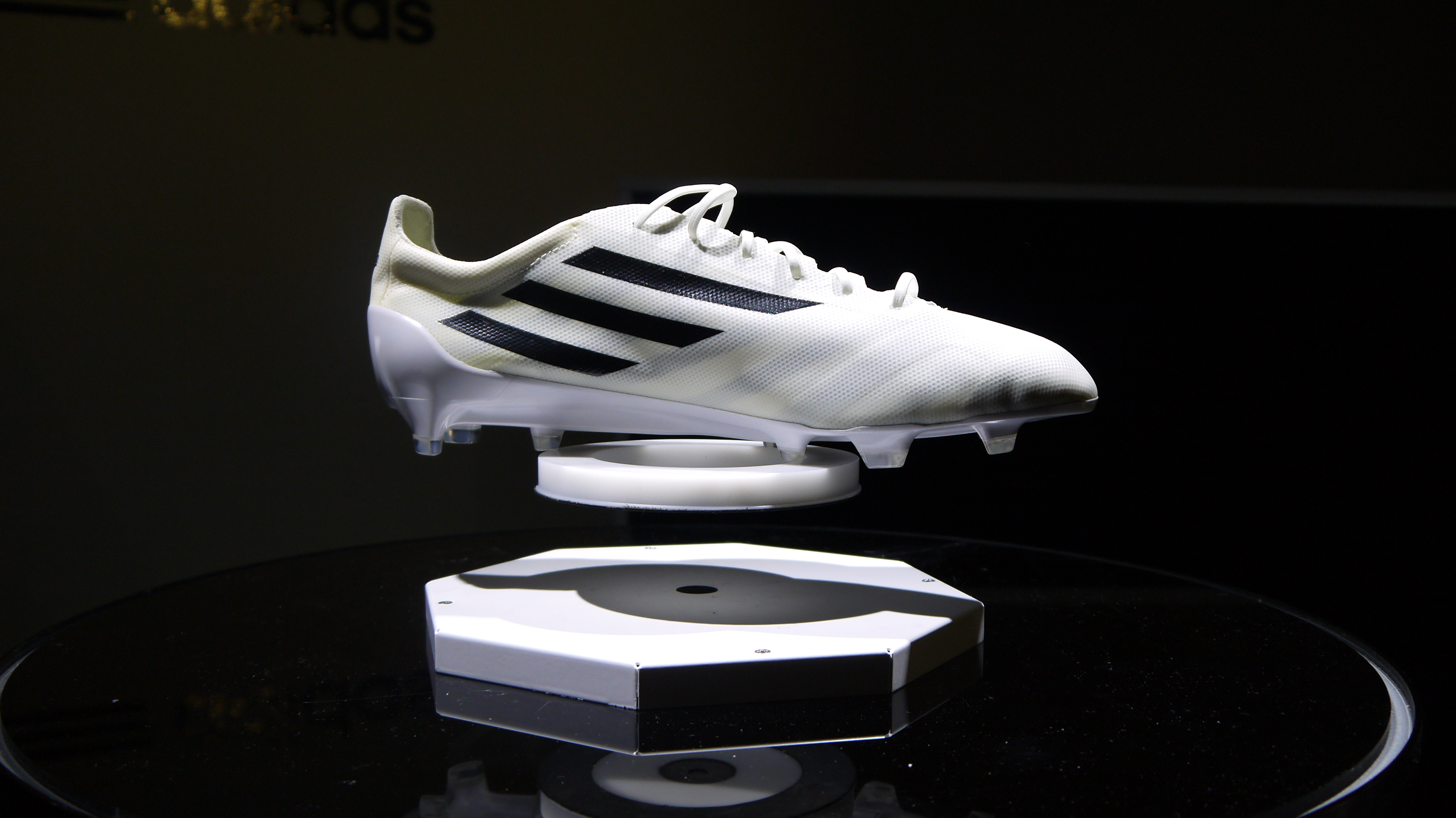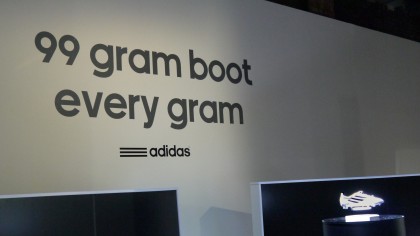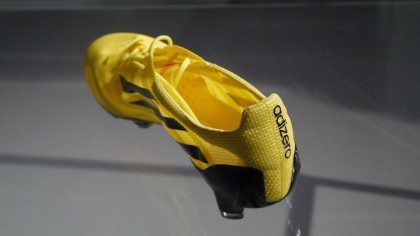Uncovered: the technology behind the impossibly light football boot

A bar of soap. The iPhone 5. A pear. An empty wallet. These are all things that weigh more than Adidas' new F50 99g football boot.
When you first hold it in your hand, it's hard to believe that this is really something that a professional sportsperson could wear. It's so light that it has more in common with a ballet slipper than a protective layer worn by those earning £200,000 per week.
"The great thing is when we present [the new F50 boot] to players, we don't have to explain what it does, the advantages it brings," said Antonio Zea, Adidas' director of soccer.

"We've constructed a new material [for the boot] that's both very strong, lightweight but importantly lets light filter through too."
That last point is one Zea reiterated time and again when speaking about the conceptual F50 boot – the notion that it's presented in a way that gives a psychological boost through the way it looks.
Staying safe
But while some may see that lack of weight as a good thing, others might perceive it to make the foot vulnerable. A spate of bone fractures and breaks to professional footballers six years ago prompted the boot manufacturing industry to re-think the construction of boots, so how does the new F50 stay so light while managing to be protective?
"We're using a new material for the upper, not synthetic leather like in other products," said Zea. "It's a textile made from a single layer of woven polyester mesh… and polyurethane which protects and seals the boot as well as keeping out moisture and dirt.
Sign up for breaking news, reviews, opinion, top tech deals, and more.
"It can withstand the requisite abrasion and forms around the foot too – we started on this material 18 months ago too, as it's a crucial part of the design.

"The outsole is a polyamide which allows us to be as thin as we can go while maintaining the requisite stiffness."
This new material allows the boot to be 66g lighter than the current iteration of the F50 boot, and meant new manufacturing processes were needed to put it together:
"We usually have a specific process for putting our boots together, but we wanted to do something different, to help make something that met the players' needs [with the new F50], " said Zea.
"In the construction, when the boot is all created, we put our hand in and cut out the insole board as it's not needed, then the sock liner goes on top.
"With the new F50 boot, we reduced the parts to as few as possible, and this actually speeds up the manufacturing process, as more parts means it takes longer to construct."
Greater data
It also features MiCoach technology, allowing the wearer to get data from their game on speed, acceleration and more which can then be analysed by the coach on a tablet, or used to settle a score with a buddy over who is the fastest on the pitch.
It's not a new concept – Adidas introduced it in 2012 – but to pack in the sensors needed into such a light design is hugely impressive.
But the technology used doesn't end with what's in the boot; making sure that it can stand up to the rigours of footballing life, be it the professional athlete or the weekend warrior, takes up a significant amount of the development process.
"We went through 60 different textiles for the performance and look for this boot," admitted Zea. "Testing evolves over time – ten years ago it was quite different.
"It all used to be a lot more mechanical, more machine testing on the tearing and pulling, a lot of dynamic testing to replicate the on-field stresses.

Gareth has been part of the consumer technology world in a career spanning three decades. He started life as a staff writer on the fledgling TechRadar, and has grew with the site (primarily as phones, tablets and wearables editor) until becoming Global Editor in Chief in 2018. Gareth has written over 4,000 articles for TechRadar, has contributed expert insight to a number of other publications, chaired panels on zeitgeist technologies, presented at the Gadget Show Live as well as representing the brand on TV and radio for multiple channels including Sky, BBC, ITV and Al-Jazeera. Passionate about fitness, he can bore anyone rigid about stress management, sleep tracking, heart rate variance as well as bemoaning something about the latest iPhone, Galaxy or OLED TV.